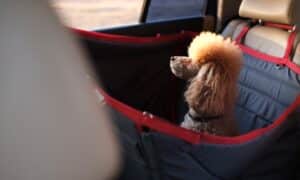Many Pugs are not allowed to roam around wildly at will. Since pet owners usually have a busy schedule, most Pugs wind up indoors all day which can make things difficult when trying to housetrain a Pug. A good way to combat this is by incorporating a crate and leash into your Pug’s daily routine. If the Pug is full grown or just returning to your house from the kennel, you may need to treat the training process as if your Pug was a puppy.
One popular option is to leave your Pug in his crate while you are away from home and take him out on the leash when you return. Restricting a Pug all day every day is not healthy for your Pug so you need to make sure that he gets plenty of breaks.
Begin as you would with a puppy and schedule regular potty breaks. Be sure to make the breaks long enough after a meal so that the Pug can actually eliminate something worthwhile on the trip outside.
Start by devoting a whole weekend to observing your Pug on a leash when he is out of his crate so that you can learn the signs that he needs to use the bathroom. Your Pug might act shaky or agitated and may even squat down. Take these signs as your cue to take pup outside.
If your Pug does a good job and uses the bathroom the way you have hoped for, be sure to praise him for his efforts. This type of positive reinforcement helps your puppy learn exactly what to do to make you happy.
If you went out of town and had to leave your Pug in a kennel, you may need to start training all over again. Since the Pug went potty in the same place that he ate and slept, he may be feeling really depressed.
Pugs don’t like to mix potty with living space anymore than you want to eliminate on the floor in your kitchen. So he needs to start again and build up confidence in his potty skills and in the willingness of the adult on duty to take him out when he needs to go.
For older Pugs, holding urine is a much easier task because their bladders are much more developed than a puppy’s. However, if your Pug experiences a lot of potty problems he may have diarrhea, a urinary tract infection or one of many medical problems that lead to frequent accidents.
If you notice a drastic change in your Pug’s behavior, particularly potty behaviors for no apparent reason, you will want to have him checked out by a veterinarian. The problems might be something more serious.
If it turns out that your puppy has a medical condition, take it easy with the potty training. Your Pug needs lots of love and affection and may not be able to control his urges or be able to focus on them. Keep your Pug on a leash when he’s not in the crate and keep a close eye on him for signs that he needs to potty while he is recovering.





